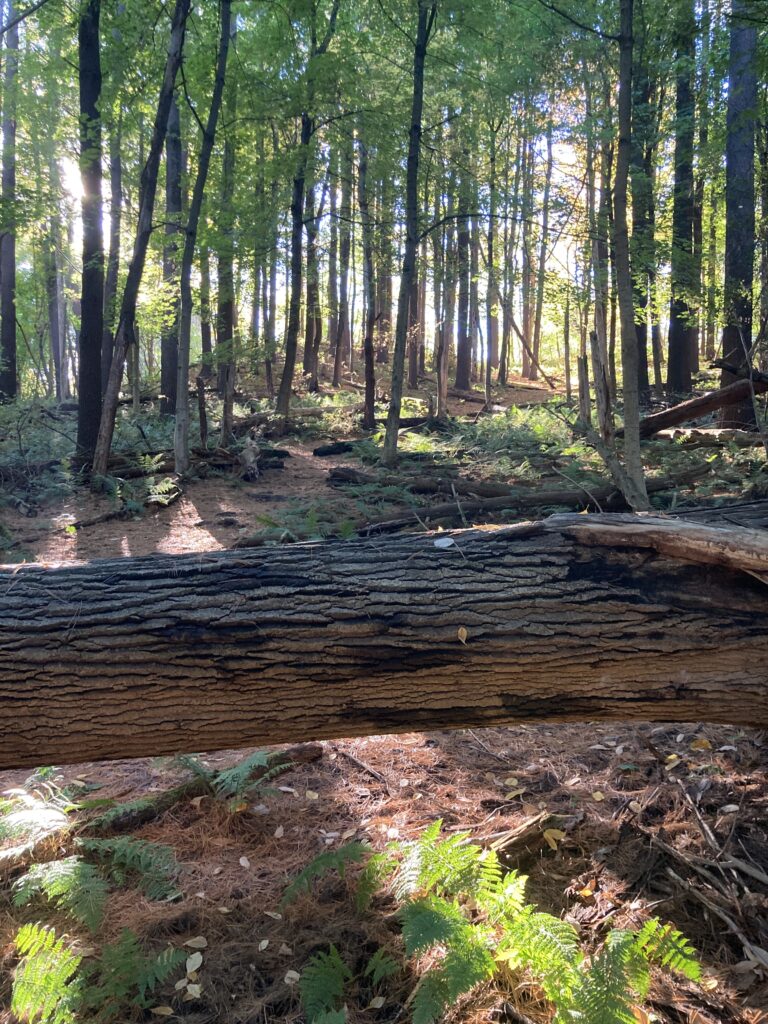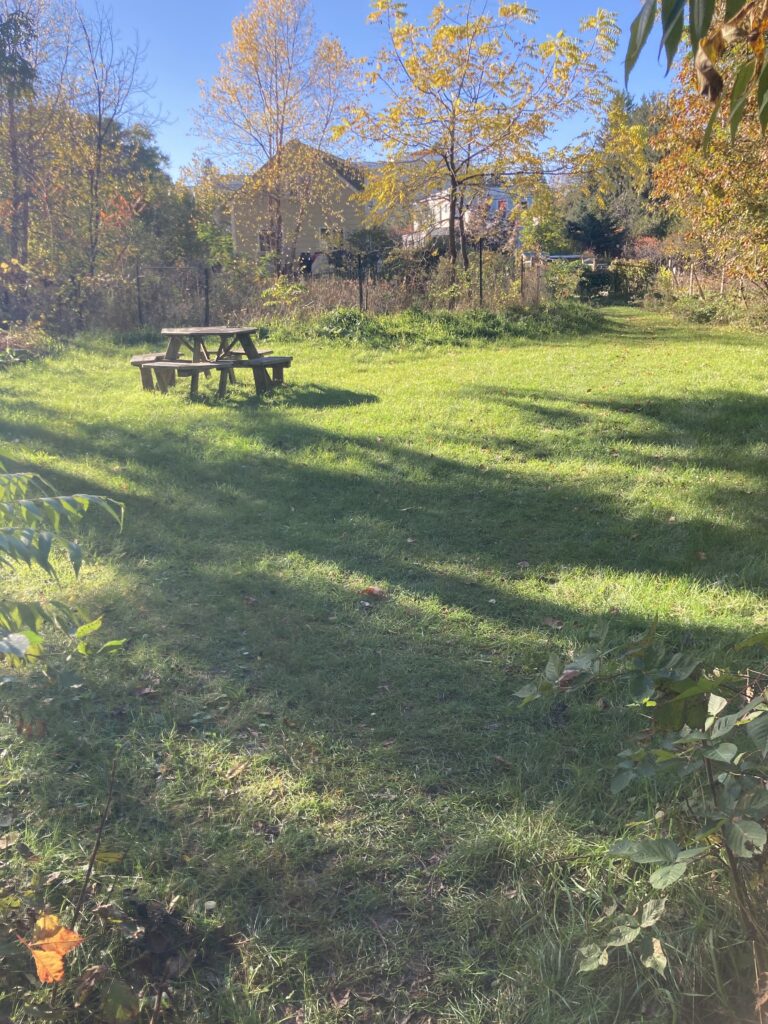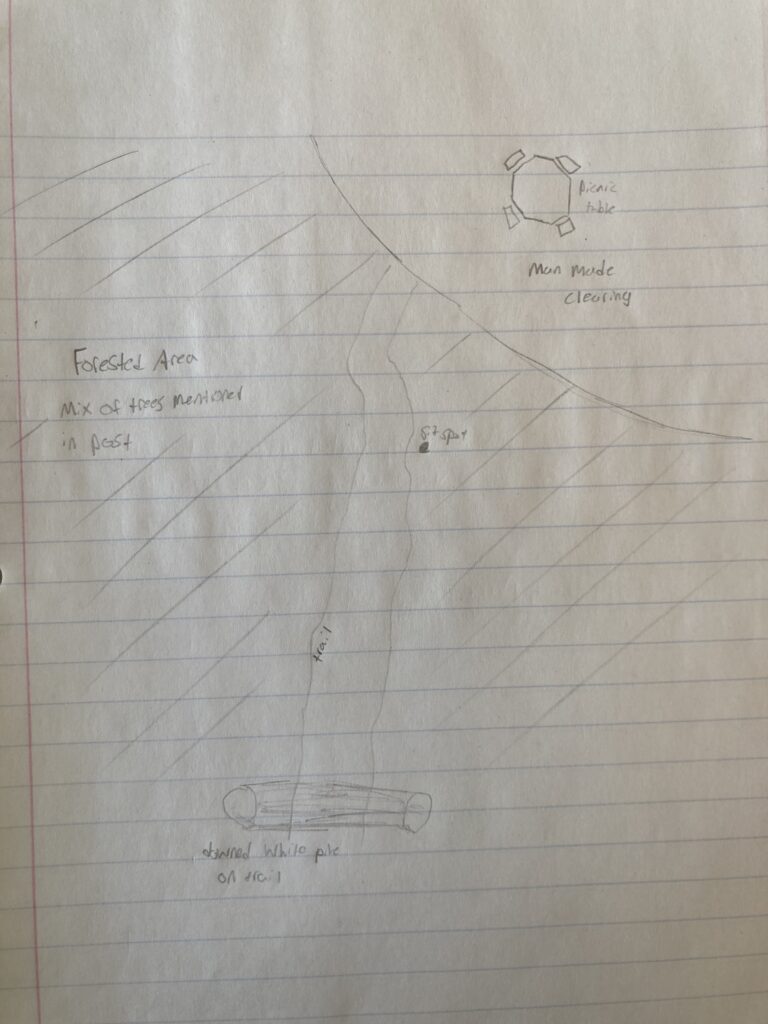This week, I went back to my phenology location in Centennial woods, and just made some observations about the area. I sat for 15 minutes near the middle of my location, and simply listened to and looked at what was happening around me.
Being in the woods, I heard “traditional” nature sounds; I heard leaves rustling, ground animals scampering through the underbrush, and a few separate bird calls. But Centennial woods is also part of an urban landscape, so I could hear constant background noise of cars on the highway, an occasional airplane, and an electric saw that was being used in the nearby neighborhood. I think that it is easy to forget the impact UVM and Burlington have on natural areas such as centennial woods when you are within them, but those background noises are a reminder that the systems are interconnected, and noise and debris from the city has a direct impact on the forests’ health.
While observing the forest around me, I was able to see some changes from the first time I visited, and notice some new features as well. The Norway Maple trees’ leaves had all turned a vibrant yellow, creating patches of yellow in the otherwise green canopy. I also saw that the forest floor was more completely covered in in pine needles from the White Pine. This trip to my location was the first time I had taken notice of the animal activity. As mentioned above, I heard a few species of birds, and I also saw some squirrels on the trees, and many spiders and their webs low to the ground in ferns and other leafy plants.
Below is an updated list of the trees in my location:
-Norway Maple
-Red Maple
-Striped Maple
-Eastern White Pine
-American Beech


